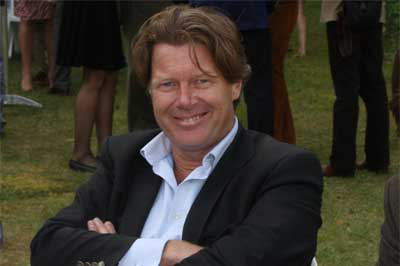Sonac aims at reintroduction of PAPs in aquafeed

The European Feed Law is about to be modified and “the new Feed Gallery concept at EuroTier is incredibly valuable and comes at just the right time,” says Gert Mulderij, Sales and Marketing Director at Vion Ingredients.
“And it’s about time” said Mulderij. After the outbreak of BSE in the EU in 2001, a total ban on the use of all animal proteins in feed for farm animals followed.
Now, 11 years later, movements are towards the relaxation of the ban. In July 2010 the European Commission presented the TSE Roadmap 2 in which it concluded that the measures to combat BSE have been successful.
The Commission in 2011 issued a draft proposal with the aim of easing the ban on feeding processed animal proteins (PAPs) from non-ruminants to pigs, poultry and fish. In other words, the European Union is considering the reintroduction of feeding:
• poultry proteins to pigs;
• pig proteins to poultry, and
• under very strict conditions pig and poultry proteins to fish.
On Monday, July 18, EU Member States agreed on reintroduction of non-ruminant animal proteins in fish feeds. This new legislation comes into force on 1 July 2013.
In April 2013 the EU Member States will vote on the next step: the reintroduction of animal protein in poultry and pig feeds.
Feed advantages
Sonac, part of Vion Ingredients that manufactures products based animal byproducts, fully supports this new legislation. “The use of animal proteins in animal feed has significant advantages,”syas Mulderij.
Animal protein used in feed can be an important source of protein and minerals, with a nutritional value that is similar to, or better than those of plant protein materials.
Another important advantage according Mulderij is that the use of animal protein may reduce the demand for soy.
This adds to a more sustainable feed chain, Mulderij explains. “Less demand for soy leads to less deforestation. Furthermore animal byproducts from processing plants get a new destination because the proteins and fats herein can be reused in animal feed. Naturally, this contributes to a more sustainable economy that perfectly fits in the social responsible management style Sonac pursues”.
Wageningen study
Also a study of Wageningen UR Livestock Research commissioned by the Ministry of Economic Affairs (May 2012) endorses the potential of the use of animal proteins in animal husbandry.
One of the main conclusions of the study is that animal protein is an excellent protein source and therefore an excellent raw material in compound feedingstuffs for pigs and poultry.
Furthermore, the report concludes that the reintroduction of animal proteins in animal feed can contribute to the sustainability of the livestock sector, as indicated by Gert Mulderij.
Finally, the report states that feeds can become better and cheaper. By-products of slaughter can therefore get more value, reducing slaughterhouses costs. This can benefit the entire production chain.
Innovation
“Reintroduction of PAPs will initiate more innovation in the use of animal proteins in animal feeds, which until now is still hampered by legislation,” says Mulderij.
Two of these innovative products with high potential will be presented at EuroTier by Sonac, namely MucoPro and Gelko Powder.
Gelko powder is a high digestible soluble animal protein, which makes it very suitable for use in food for animals with rudimentary digestive organs such as shrimp and fish larvae. This product also contains many important minerals which further increases its nutritional value.
MucoPro is an animal protein stimulating intake of food by young animals. The product is a source of very easily digestible amino acids and peptides. It is also hypoallergenic and 100% soluble and therefore easy to use in dairy applications.
The special and extensive processing process makes MucoPro guaranteed safe and can even be used in factories that have ruminant and non-ruminant production at one location.
Sonac is happy to give further information at EuroTier in Hall 14 stand G04











